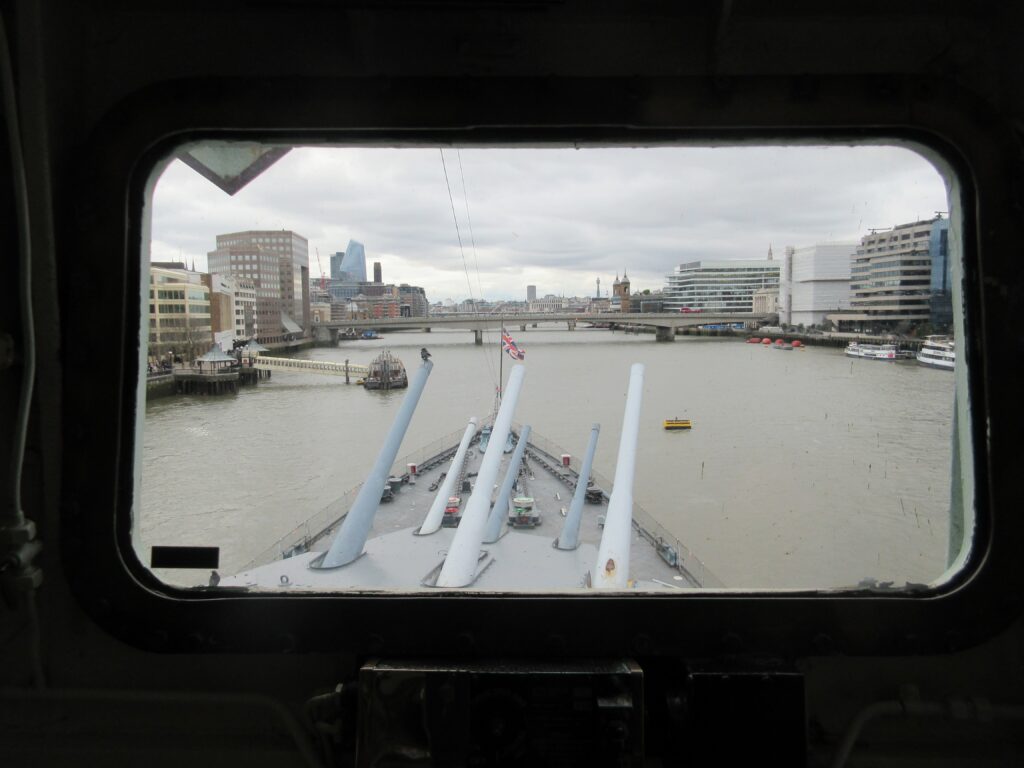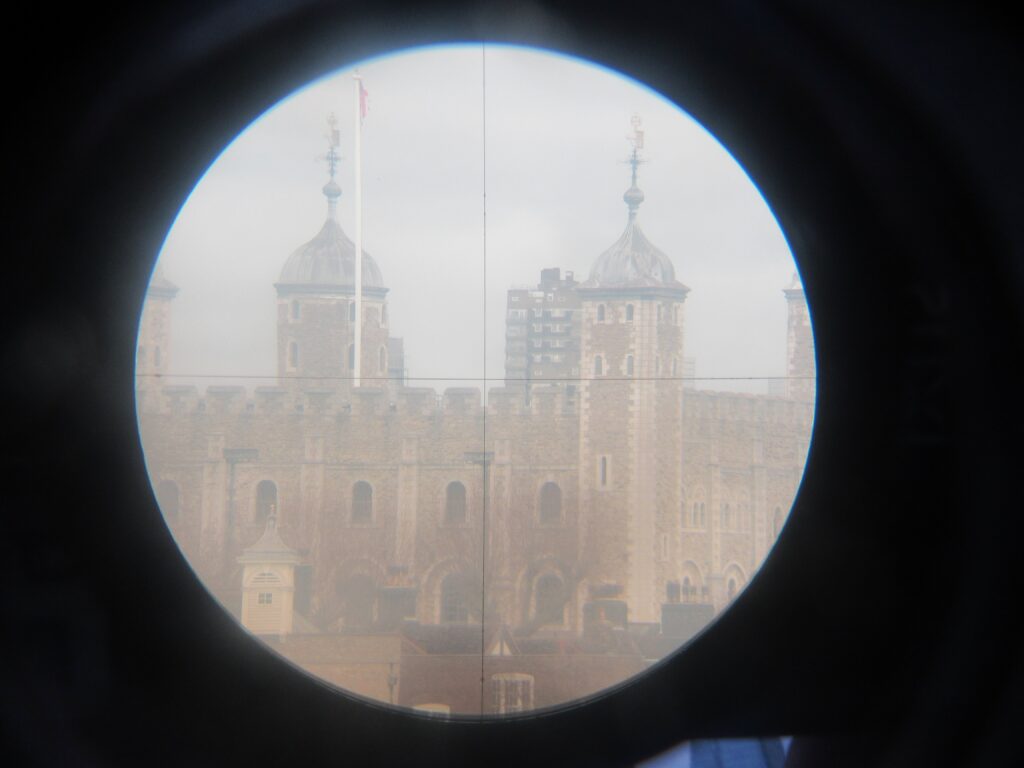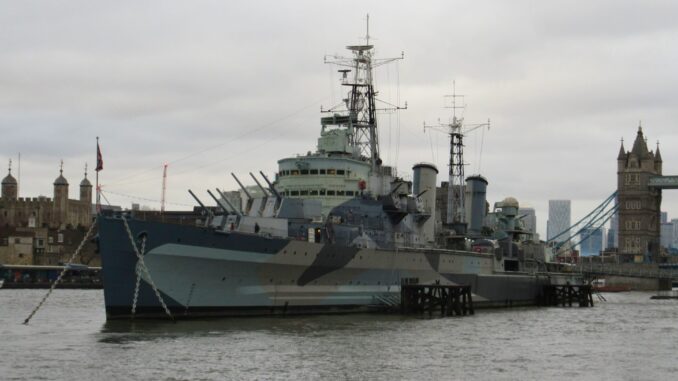
A visit to HMS Belfast on a chilly, late January Tuesday gave me the ship almost to myself, the first time I’d visited this floating museum opposite the Tower of London in almost 20 years.
Now operated by the Imperial War Museum, this warship – not a battleship, but a cruiser: more lightly armed and armoured, but faster – was launched in 1938 at the Harland + Wolff yard in Belfast (this is the shipyard that built the Titanic).
It saw action in WW2 protecting the Arctic convoys, taking part in the Battle of North Cape that saw the sinking of the German cruiser ‘Scharnhorst’, and was one of the first ships to open fire at D Day, its six inch guns bombarding the German defences with over 4,000 shells during the first 33 days of Overlord. It later saw service in the Korean War, and since 1971 has been moored on the south bank of the Thames between Tower and London bridges.
It is an exciting (can I say “fun” in the context of such a monumental instrument of war?) place to visit. One can sit in the Captain’s chair, climb into one of the four gun turrets, and go below decks (and below the water line) to the boiler and engine rooms to see the power units that could push the Belfast through the waves at up to 30 knots.
It provides something of the sense of life on board a fighting ship – the low, narrow passageways, almost vertical metal ladders connecting floors, the locking, bulkhead doors between sections, and pipes, cables, valves and machinery of all sorts. What it can’t do, of course, is replicate the smells and noise of a working ship, nor the extreme conditions the sailors had to endure: temperatures so cold that ungloved hands froze onto the metal handrails, storms with waves that broke over the flag deck, the highest point of the ship.
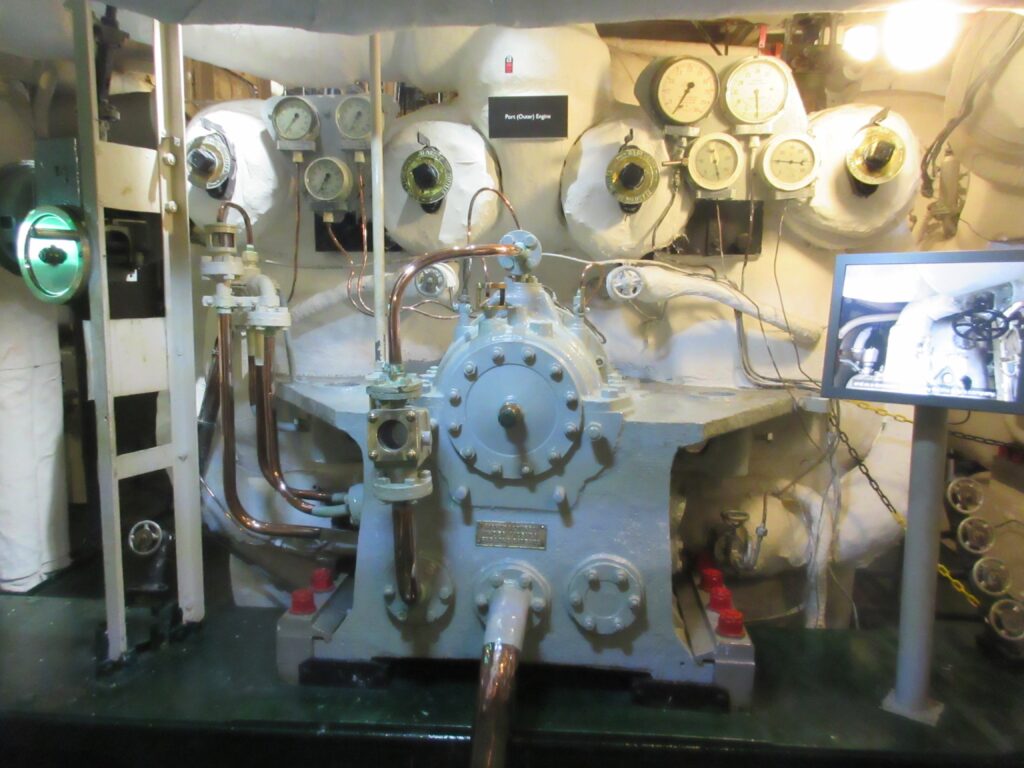
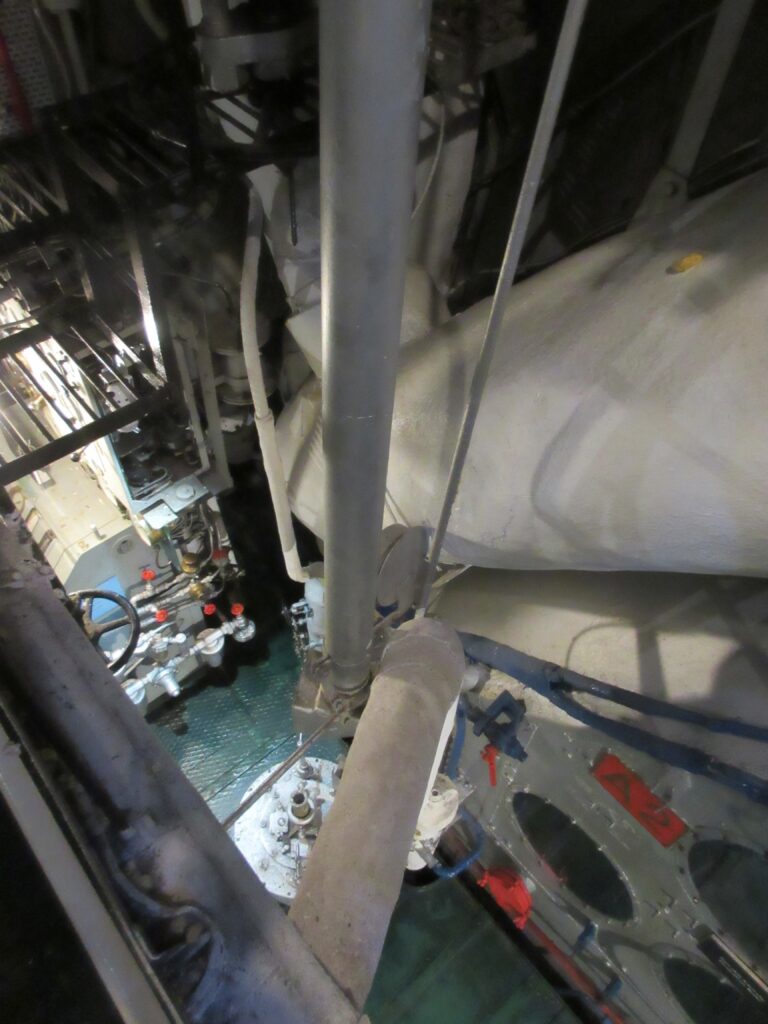
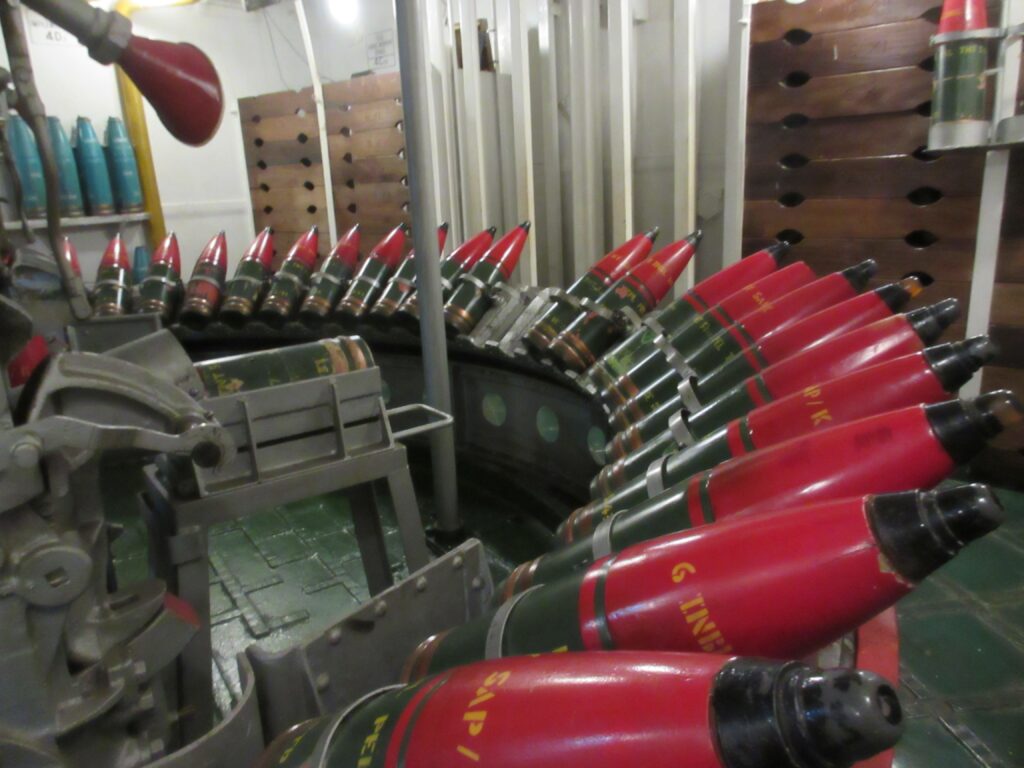
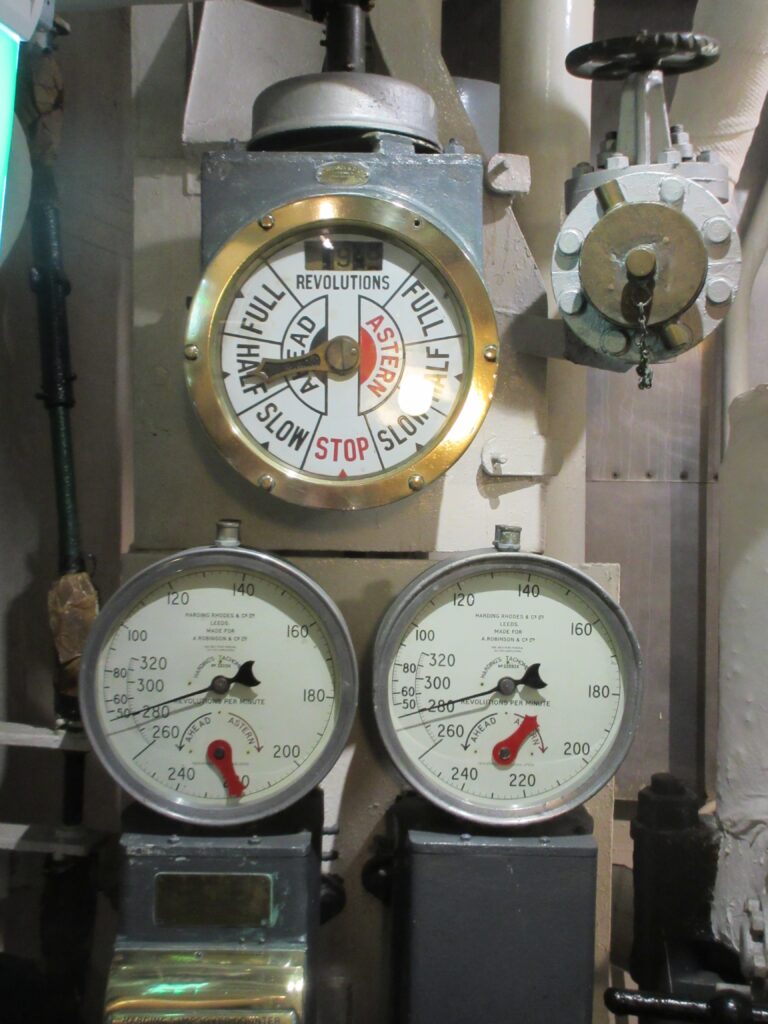
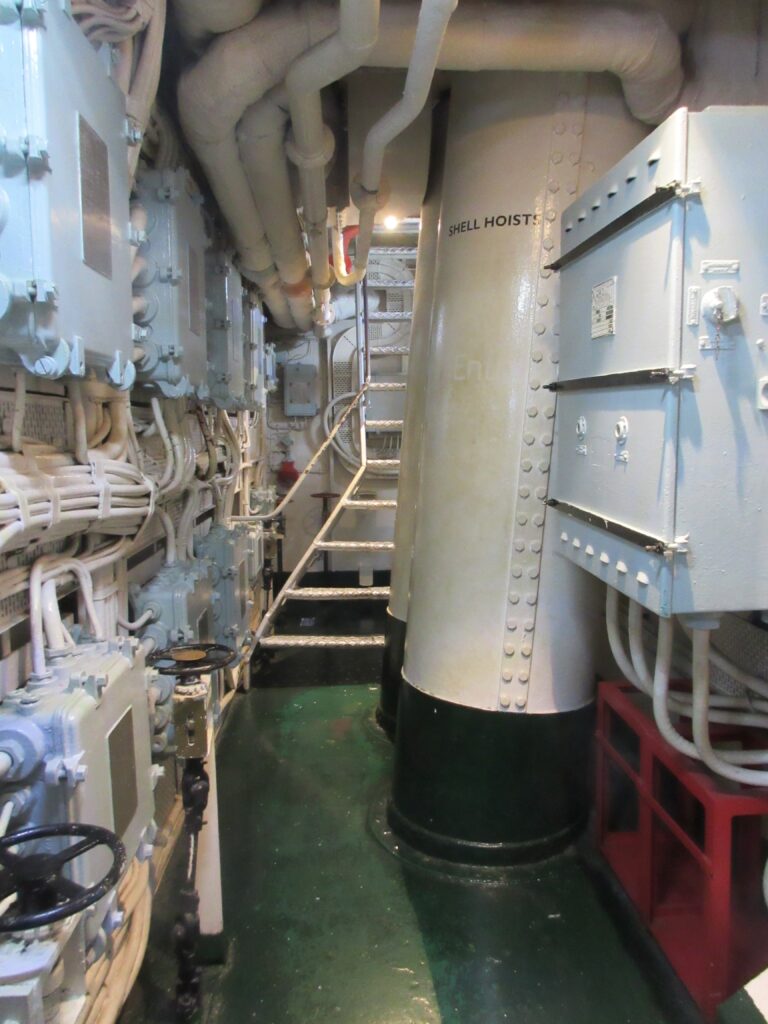
And be warned, it is a big ship. The route takes you up and down over nine storeys, through the mess decks, kitchens, laundry, sick bay, and other services for the 800+ crew, up to the Compass Platform from where the captain controlled the ship at sea, and to the Admiral’s bridge (the Belfast was the squadron flagship during the Arctic convoys, and the HQ of the bombardment force for Gold and Juno beaches on D Day). As well as the engine rooms, below decks you will find the shell rooms and magazines, with even lower and narrower passageways to squeeze through. My Fitbit tells me I did over 6,000 steps – more than three miles of walking – in the couple of hours I was on board.
It is claustrophobic, chaotic (although pretty well signposted I often had the feeling – particularly below decks – of being slightly lost), tiring – and hugely recommended. If you’ve got the lungs for it, it is well worth a visit.
Full details of opening times, how to book a ticket and so forth can be found at the official Imperial War Room’s site here.

